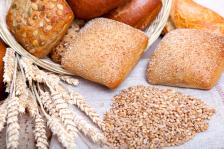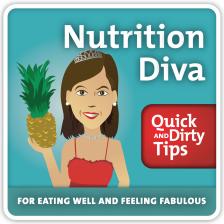What to Eat Instead of Grains
Cutting down on grains is a good way to improve your nutrition. But what should you eat instead?

Sponsor: Squarespace, the all-in-one platform that makes it fast and easy to create your own professional website, e-commerce site, or online portfolio. For a free trial and 10% off, go to squarespace.com/diva and use offer code DIVA.
Thanks for your great question, Ann! As I explained in a recent episode, I haven’t cut grains out of my diet entirely. But I have cut back on them because I find that they are easy to overeat and they tend to crowd other, more nutritious foods (like vegetables) off of my plate. But Ann’s right: Vegetables tend to be much lower in calories than grain-based foods.
For some of us, that’s a good thing! Eating more vegetables and cutting back on grains can help us fill up on fewer calories.
See also: 3 Tips on How to Eat Less Without Feeling Hungry

See also: Healthy Weight Gain
What Foods Can Replace Grains in Your Diet?
In my own diet, as I’ve cut back on grains, I’ve allowed myself a little more liberty with foods that are high in fats. I’ll snack on nuts rather than pretzels. I buy full-fat yogurt and milk—but usually skip the cereal aisle. All those vegetables I’m eating are often roasted or sauteed in a generous amount of olive oil. And I wouldn’t dream of dressing a salad with fat-free vinaigrette! These are liberties that I simply couldn’t afford to take if I were also eating six to 11 servings of grains, as the USDA recommends.

I did have three servings of grains yesterday (the tortilla, the cookies, and the pasta), but that’s a lot less than the USDA guidelines. In fact, only about a third of my calories came from carbs, and a little more than half of my calories came from fat.
Is this a problem? I don’t think so.
How Much Fat Is Too Much?
The Institute of Medicine still recommends keeping fat to 1/3 or less of your total calories. This is really a hold-over from the days when scientists were convinced that eating too much fat would cause heart disease. A mounting body of evidence suggests that this is not the case. If anything, overconsumption of refined grains may play a bigger role in both obesity and heart disease.
See also: Is the Link Between Cholesterol and Heart Disease Bogus?
Although the big government agencies (which respond notoriously slowly to new facts) still recommend limiting fat to prevent weight gain and heart disease, many experts are now turning the conventional wisdom on its head by suggesting that we should relax about fat and keep a tighter reign on carbs instead.
See also: Do Low Carb Diets Work?

I am wary of such extreme approaches. Although it is somewhat lower in carbs and higher in fat than the standard (outdated) recommendations, my diet is neither very low in carbs nor very high in fat.
Fats, proteins, and carbohydrates (and the foods that provide them) all have something to contribute to our health and function. Diets that eliminate or severely restrict entire food groups or classes of nutrients are much more likely to be insufficient in one nutrient or another.
I know it’s boring but I’m still a fan of balance and moderation. And, of course, vegetables!
See also: Moderation in All Things, Part 1 and How Important is a Varied Diet?
What About You?
I also know that there is no one dietary prescription that works for everyone. So, I’d be interested to know what has and hasn’t worked for you. Have you cut out or cut back grains? Are you eating more fat? Less fat? More protein, perhaps? What seems to be best for managing your weight, appetite, energy, or other issues?
If you have a comment, question or suggestion for a show topic, send me an email. And don’t forget to sign up for my free weekly newsletter, for more tips, recipes, and answers to your nutrition questions.
References:
Comparing low-fat and low-carbohydrate diets. Ann Intern Med. 2014 Sep 2;161(5). Read about study.
Oh K, Hu FB, et al. Dietary fat intake and risk of coronary heart disease in women: 20 years of follow-up of the nurses’ health
study. Am J Epidemiol. 2005 Apr 1;161(7):672-9. Read article.
Bread/bread grains, close up of various colorful vegetables, grilled chili chicken images courtesy of Shutterstock







